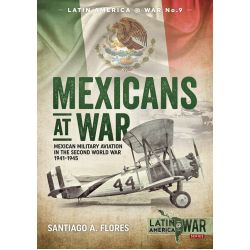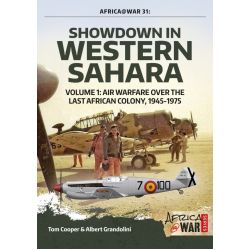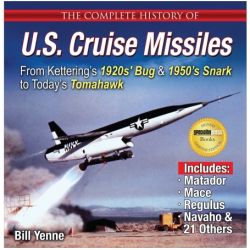Fermeture estivale du 1er août inclus au 22 août 2023
- Accueil
- › Entre Deux Guerres
- › Autres forces Aériennes
- › AERIAL OPERATIONS PARAGUAY IN THE REVOLUTIONS
Descriptif
In the first half of the 20th Century, there were several revolutions in Paraguay, starting in 1904, then 1908, 1911-12, 1922-23, 1936 and finally 1947. In 1922, a huge internal crisis in the Liberal Party led to a bloody revolution and for the first time in the history of the country, both sides decided to use aerial power against the enemy. There were not any airplanes available in Paraguay at that time, and very few pilots, just three, so both the government led by President Eusebio Ayala, and the revolutionaries led by a couple of Army colonels, Chirife and Mendoza, searched for foreign pilots and planes in Buenos Aires, Argentina. Many First World War veterans emigrated to Latin America in search of a better life, either opening flight schools or offering their services in local conflicts. That is how some of them came to Paraguay with their own aircraft, which were bought by either the government or the revolutionaries. The three Paraguayan pilots offered their services to the government, which soon established the first air base near the capital, in a wide open field called ‘Ñu-Guazú’ (a Guaraní name meaning ‘Big Field’). Meanwhile, the rebels organized their own air base, first near the city of Villarrica, and later in Cangó. The main types used by both sides were the Ansaldo SVA5 and SVA10, but the government also managed to purchase a Breguet XIV, an Armstrong Whitworth FK.8, a SPAD S.20 and a couple of SAML A.3. Inevitably the first dogfights took place, and also bombing raids, strafing enemy troops, and recce missions on both sides. Finally, in mid-1923, the revolutionaries were defeated and one of the consequences was the foundation of the Military Aviation School. In contrast, the Revolution of 1947 lasted just a few months but it was as bloody as the previous one, if not more so. The government, supported by the Colorado Party, fought against the revolutionaries, composed of almost 70% of the Army, Navy and Air Arm, supported by the Liberal, Febrerista and Communist parties. Regarding the Air Arm, it split in two, but at the beginning most of the aircraft in flying conditions were used by the revolutionaries, whose main base was the city of Concepción, in the north of the country. Soon, the government air arm had some aircraft in flying condition although most of the Italian types purchased in 1939 were out of service. Only Lend-Lease trainers such as PT-19, BT-13, AT-6 types were used for recce and light bombing raids, using mortar ammunition. Some weeks later, the loyalists managed to repair some Caproni AP-1s to be flown against the rebels. There were a few dogfights but no aircraft were shot down in them, although some were lost due to AA fire. In the end, the government could defeat the revolutionaries, mainly because of the lack of tactical organization in the rebel forces. This is the first in-depth account of them with data, pictures, maps and profiles, some of them never published before.
Les avis sur le produit AERIAL OPERATIONS PARAGUAY IN THE REVOLUTIONS
Nos clients ont aussi aimé
|
AERIAL OPERATIONS PARAGUAY IN THE REVOLUTIONS
|
Ajouter au panier |
- Les Pionniers de l'aviation
- Aviation militaire - Première Guerre mondiale
- Entre Deux Guerres
-
Aviation militaire - Seconde Guerre mondiale
- Nouveautés Seconde Guerre mondiale
- Aviation Militaire Française
- Aviation Militaire britannique
- Aviation Militaire US
- Aviation Militaire russe - URSS
- Aviation Militaire - autres Forces Alliées
- Aviation Militaire Allemagne
- Aviation Militaire Italie
- Aviation Militaire Japon
- Aviation Militaire - Autres Force de l’Axe
- Opérations Front Ouest
- Opérations Front Méditerranée
- Opérations Front Est
- Opérations Front Pacifique
- Opérations Front Atlantique
- Aviation Militaire à Réaction
- Magazines Seconde Guerre mondiale
- Récits, Biographies Seconde Guerre mondiale
- Livres Divers Seconde Guerre mondiale
-
Aviation Militaire Contemporaine
- Nouveautés aviation militaire contemporaine
- Aviation militaire contemporaine française
- Aviation militaire contemporaine britannique
- Aviation militaire contemporaine US
- Aviation militaire contemporaine URSS, Russie, Pacte de Varsovie
- Aviation militaire contemporaine Europe et OTAN
- Aviation militaire contemporaine autres forces
- Guerre d'Indochine
- Guerre de Corée
- Guerre d'Algérie
- Guerre du Vietnam
- Guerre des Malouines - Falklands
- Guerres du Golfe - Irak - Afghanistan
- Autres Conflits Contemporains
- Hélicoptères Militaires
- Drones
- Magazines Aviation militaire contemporaine
- Collections Aviation militaire contemporaine
- Technologie - Prototypes - Expérimental
- Aviation militaire spécialisée - Transport - Espions - Surveillance
- Livres Divers Aviation militaire contemporaine
- Aéronavale
-
Aviation civile et Aviation Commerciale
- Nouveautés Aviation civile et aviation commerciale
- Aéropostale
- Aviation commerciale Avant Guerre
- L’Ere des Propliners - Les Hélices
- Jets Aviation commerciale
- Histoire des Compagnies Aériennes
- Registres Aviation commerciale
- Ouvrages Divers Aviation commerciale
- DVD Aviation commerciale
- Aéroports
- Magazines aviation civile et commerciale
- Catastrophes aériennes
- Formation personnel navigant
- Formation des pilotes aviation civile et aviation commerciale
- Livres divers Aviation commerciale
- Aviation française
- Hélicoptères - Autogires
- Aviation légère, aviation tourisme
-
Les Grandes Collections
- Nouveautés des Collections
- 4+ Publications
- Aerofax
- Les Ailes françaises
- Aircraft In Detail
- Air Doc
- Airdoc Smoke Trails
- AIRfile
- AJ Press
- Albatros
- Ali Straniere in Italia
- Airlife Combat Legend
- Ali d’Italia
- Altipresse : Histoires Authentiques
- Avions et Pilotes
- Batailles aériennes
- Camouflage & Markings
- Ciel de Guerre
- Coccarde Tricolori
- Daco
- Docavia
- Im Focus
- Ginter Air Force Legend
- Ginter Naval Fighters
- HT Model
- IBN
- Icare
- Kagero Legend of Aviation
- Kagero Lotniczne
- Kagero Monographie
- Kagero SMI Library
- Kagero Topcolors
- Kagero Top Drawings
- Kagero Units
- Kagero Topshots
- Luftwaffe at War
- Matériels de l'Armée de l'Air
- MBI Publishing
- Mini Docavia
- Mushroom
- Nordic Air Power
- Osprey Aircraft of the Aces
- Osprey Air Vanguard
- Osprey Airwar
- Osprey Combat Aircraft
- Osprey Duel
- Osprey Elite
- Osprey Modelling
- POL
- Rae
- Red Star
- SAM Air Data
- SAM Modeller Datafile
- Squadron Signal in action
- Squadron Signal In Detail and Scale
- Squadron Signal spéciaux
- Squadron Signal Walk Around
- Suomen Ilmavoimien Historia (Filnande)
- Warbird Tech
- Warpaint
- Warplane
- WAW
- Wings of the Black Cross
- Wingmasters Hors série
- WYD
- Bandes Dessinées - Ouvrages de Peintures - Photos aviation
-
Maquettes à monter et Die-Cast
- Nouveautés maquettes à monter et Die Cast
- Trumpeter/Revell/Roden/RS Models à monter 1/72ème
- Accessoires Aéroport
- Dragon Milit. 1/72
- Dragon militaires 1/400
- Herpa 1/500
- Herpa 1/400
- AZUR/FRROM maquettes à monter 1/72ème
- A&A Models/ACADEMY/AIRFIX/AMODELARMA HOBBY/AZUR/DORA WINGS/FRROM/SPECIAL HOBBY maquettes à monter 1/72ème
- Hasegawa/Heller/Hobby Boss/IBG/ICM/ITALERI/Mister Craft/ZVEZDA-maquettes à monter 1/72ème
- Gemini Civil 1/400
- Dragon civil 1/400
- Divers Modèles à monter et Die Cast
- Multimédia
- Conquête spatiale, espace
- Calendriers, Histoire militaire, jeux, sets de peintures et produits divers
- LE KIOSQUE
Informations




